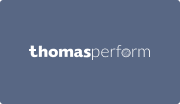Fish and chips. Salt and vinegar. Gin and tonic. Sausage and mash. Some things just go together so well that they’re never questioned, and in fact seem odd when viewed separately.
One pairing that we’ve found to be particularly good, and many of our customers share this opinion, is assessments and ATS’ (Applicant Tracking Systems). But what is this, and why is it so good?
Assessments (also known as psychometric or psychological assessments) may well be familiar to you already – it’s what Thomas is well known for. We’ve been providing assessments to businesses around the world for 40 years, helping them to better understand their candidates and employees, and supporting them to make data-driven people decisions based on deep psychological insight into aptitudes as well as behavioural, leadership style, and personality traits.
ATS, or Applicant Tracking Systems (also sometimes known as HRMS, or Human Resource Management Systems, particularly when the use case is extended beyond just recruitment), are used by many HR and talent acquisition professionals daily to track candidates applying for jobs, and/or their team members through the employee lifecycle. Many of these are very well known – Workday, Workable, iCIMS, SmartRecruiters, Bullhorn, CornerStone, Greenhouse, SAP SuccessFactors and many others.
But why do the two make such a winning (and powerful) combination? Many organisations use assessments to better understand the applicants for a role, as well as getting vital insight into their existing employees. Sending assessments to individuals to complete and viewing results is usually carried out through the assessment provider’s platform (such as the Thomas Hub), which is a completely separate system to the ATS/HRMS.
For many companies, logging into two different platforms is not a problem – we all do it on a regular basis, but if you’re sending large numbers of assessments to candidates or employees (500 or more per year is a good benchmark), this can quickly become somewhat of a burden on your HR and talent acquisition teams to be constantly switching between platforms.
Integrating the two means that your team can send assessment requests to candidates and staff directly from their HRMS/ATS. They can also view results and compare candidates’ assessment results against the requirements for a role within the same system – this can reduce manual input by up to 80% when administering assessments. As we all know, time is money, so this can reduce the stress on your HR and talent acquisition teams, and give them more time to focus on other, more valuable tasks.
Many HRMS and ATS platforms give you the ability to automate some of your people processes, and this works particularly well with assessments. As an example, it could enable your people teams to automatically send assessments when someone has an interview scheduled or progresses to the next stage of the recruitment process, or when an annual review approaches. This also results in a better candidate experience as they’re not waiting on a manual process to be sent an assessment as the recruitment process moves on.
At Thomas, we’re great believers in doing what we’re good at, and that’s assessments. When it comes to things that lie outside of our usual area of expertise, we find someone that’s an expert in that area and build a relationship with them to make sure that our customers get the best possible solution. This applies to integrations – we’ve partnered with a company called Joynd to enable our customers to integrate Thomas assessments into their people processes with ease. They effectively act as a gateway between the Thomas Hub and HR technology vendors, making it easier for us to set up integrations and reduce the manual work involved in this.
If you’re sending more than 500 assessments per year and have an ATS or HRMS in place, then why not speak to one of our team about how an integration could help reduce the workload of your HR and talent acquisition teams, and result in a smoother candidate and employee experience.




